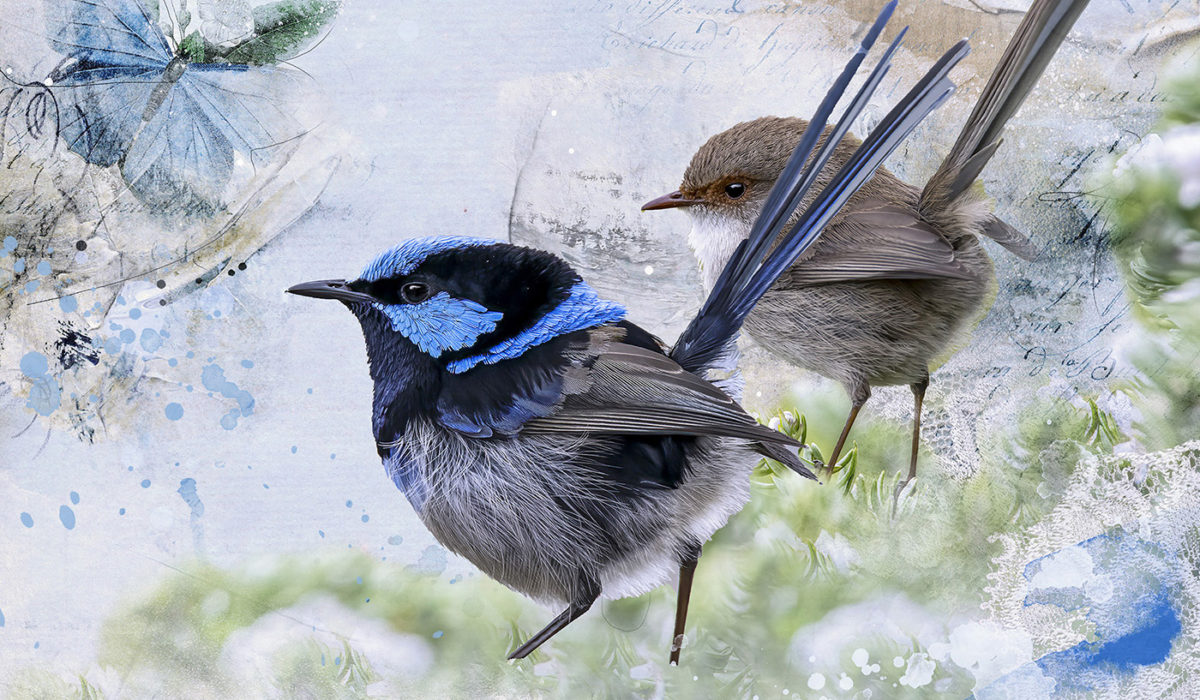— The featured artist of the 64th issue of Living the Photo Artistic Life magazine is US-based AWAKE artist Cindy Collier Harris. It’s great to be able to share my interview with Cindy here on Quill and Camera . . .
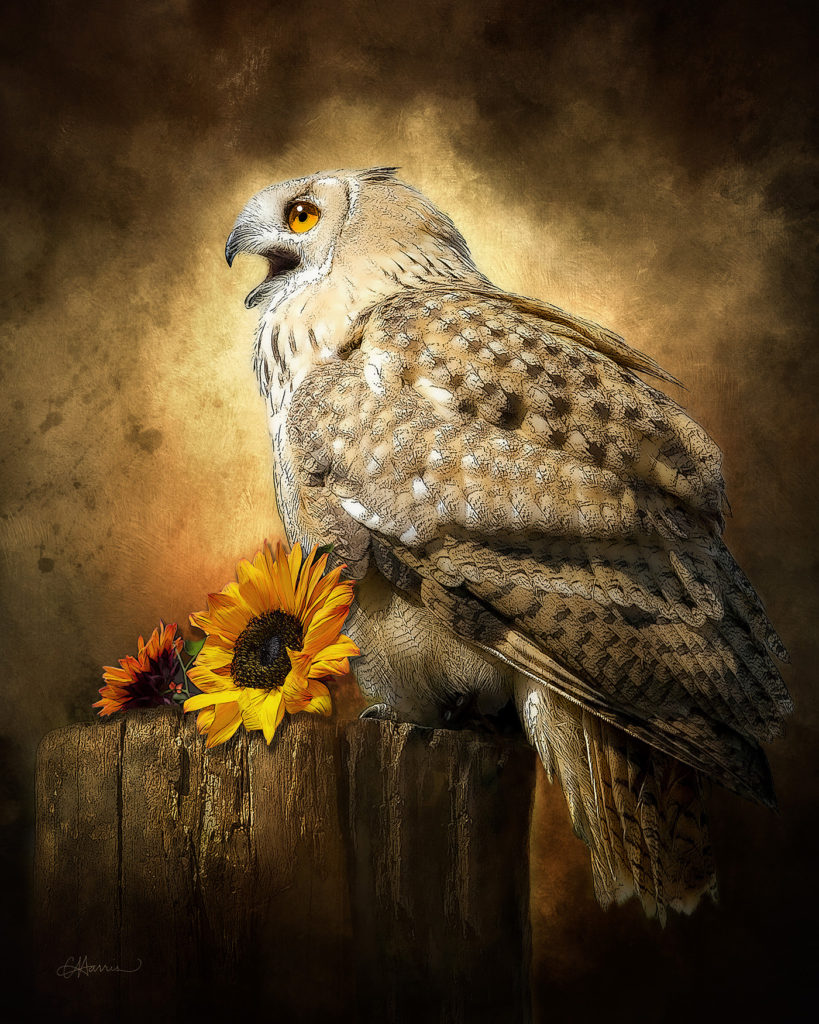
Q: What is your background in photography and art? Were you always interested in creating art?
Oh, yes! I’ve been creating art for as long as I can remember. I’ve always had an interest in the creative fields, like music and writing, as well as art and photography. In junior high school, I was sent to college for a special class to broaden my experience in drawing. And I still love drawing! In high school, I was part of the annual yearbook team where I learned more about graphic design and photography. They even sent a few of us to the Busco Nestor Studio to be trained in photography which was a wonderful experience . . . back in the days of film and darkrooms. It has served me well for many years.
Q: What does living the photo artistic life mean to you?
Well, a number of years back, my life was changed overnight by a burnt-out lightbulb. When I tried to climb on a chair to put in a new one, I fell and broke my back. To this day walking and traveling is difficult, so I enjoy finding beauty in my backyard to photograph. When I saw an ad for Sebastian Michaels’s Photoshop Artistry course, I jumped at the chance to learn how to create art on my computer … no traveling required! And when the course assignments involved traveling, I “let my fingers do the walking” by exploring my favorite stock photo websites.
Over the last few years, I’ve taken more of Sebastian’s courses and continued to grow as a photo artist. Creating computer artwork is a major part of my life now, as each day I spend time bringing my ideas to fruition.
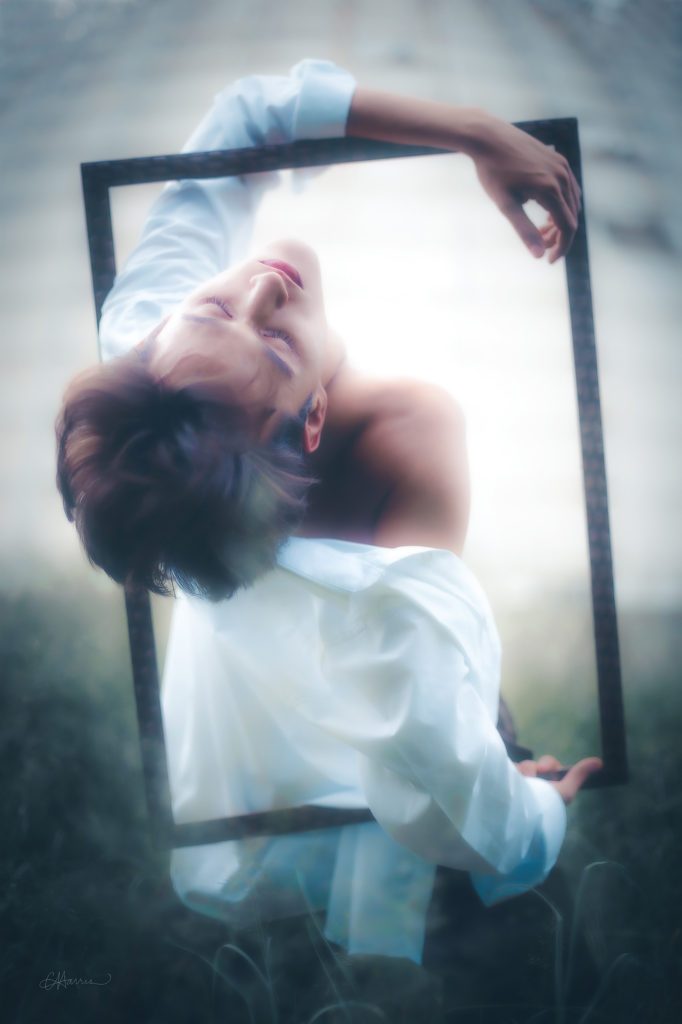
Q: How do you approach your daily creative work?
The first stage for me is keeping good notes of ideas I’d like to pursue. The “Notes” app on my Mac works perfect for that job. I also keep visual notes by going through some free stock photo websites, like Unsplash, Pixabay and Pexels. I download the photos that have promise and store them in folders on my desktop. Some of my own photos are also a good resource to draw from. Additionally, I’ve developed a wonderful friendship with a fellow artist from our AWAKE group and he sends me excellent bird photos and more. I’m very thankful for this collaboration since I am unable to travel and take the photos myself.
I like a number of different styles and genres of art, so I don’t have a particular identifying one. Often an idea or concept will come to me that gives special meaning to a particular photo. It helps if it can be expressed through a quote, some special words, or a title. Although sometimes the words don’t come to mind until the piece is finished.
When I’m ready to start a new piece, I go through my notes and photos and choose one that stands out from the rest. Then I open it in Photoshop and get busy! Almost always, I will finish a piece before moving on to the next one. The final stage is displaying my artwork on my website for others to browse through and possibly purchase.
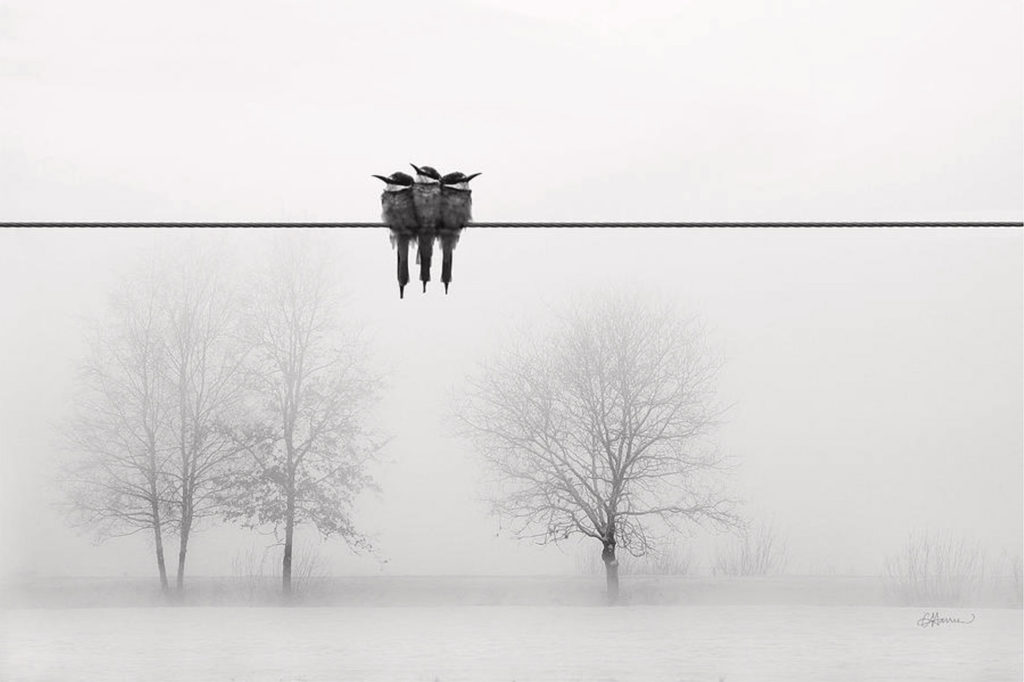
Q: Do you follow a particular workflow? And if so, what steps do you take in the actual creation of your images?
The first step I take is to upload my main background image, then duplicate it. Next, I go to Camera Raw to edit the photo. Then I will layer on more photos to create the composition, using layer masks where needed. Frequently I will use Liquify to alter something in an image. When human faces are involved, I try to alter them to make them more unique.
I will then merge everything onto one layer, make a copy, then go to On1 2020, Topaz, or another app for further editing. At this point, I may layer more photos or artwork into the piece, then merge again. I usually add textures near the end of the process to unify the artwork as a whole. Finally, I save one large image for printing, one smaller image for posting to Facebook, and one other for submitting to Living the Photo Artistic Life magazine.
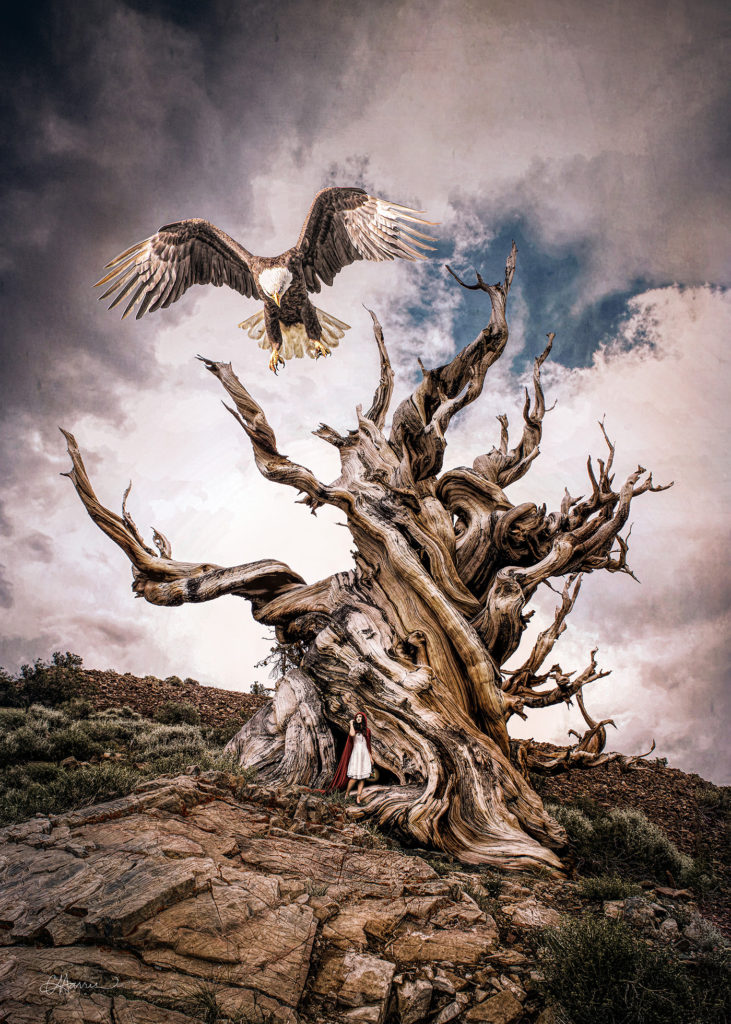
Q: Any tips or advice for other aspiring artists?
The first thing that comes to mind is: Keep Learning! I’ve taken most of Sebastian’s courses, as well as others elsewhere. This is how you continue to grow and improve as a digital artist.
Next: Keep Creating! Try to create something each day (or on some kind of regular schedule). It is through time and consistency that you will grow and build up a body of work you can be proud of.
But at the same time, try to be satisfied with a slow and steady approach. Slow and steady wins the day. Of course, it will depend on your personal goals and your own reasons for creating digital art that will help determine your ideal approach to learning and creating. Just remember that we all have only one life to live. We should be wise in how we use our time — and with that time strive to create something meaningful to us.
.
You can explore more of Cindy’s artwork on her website by clicking here . . .

